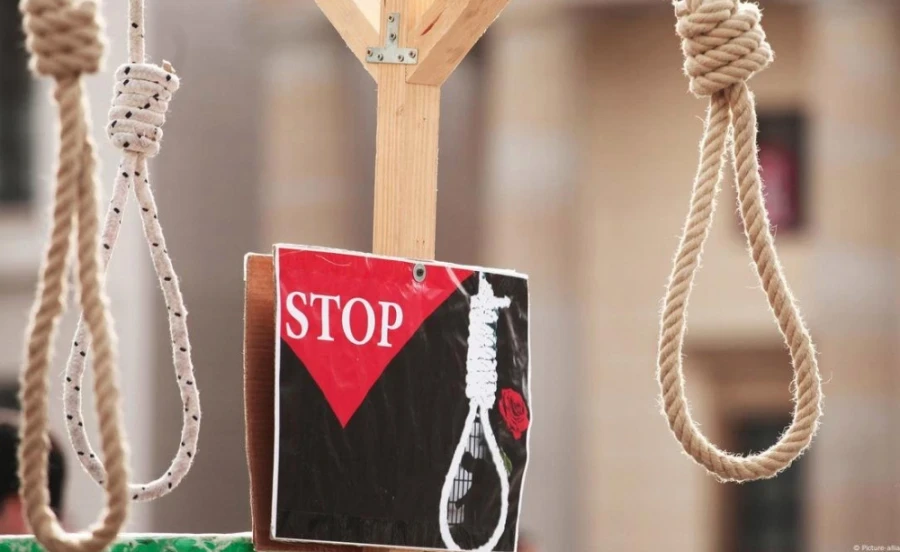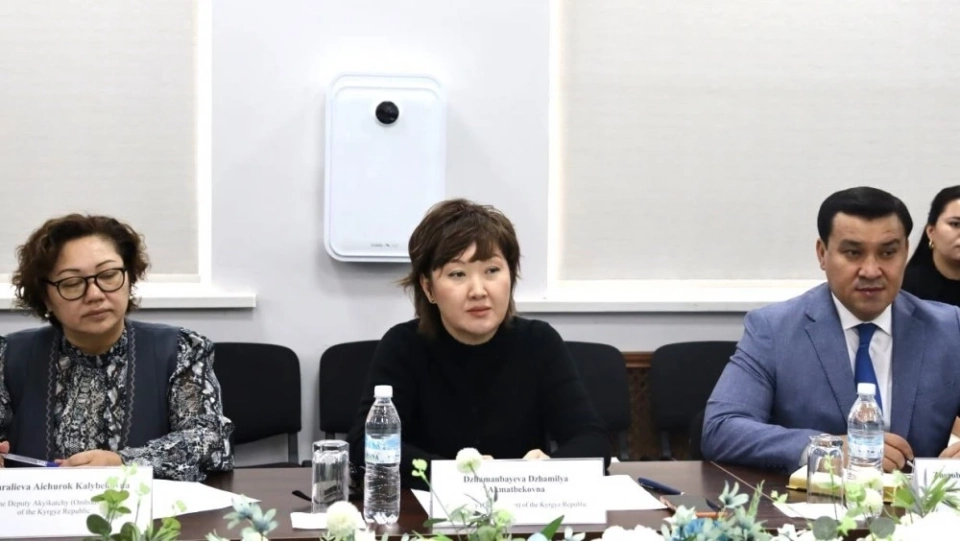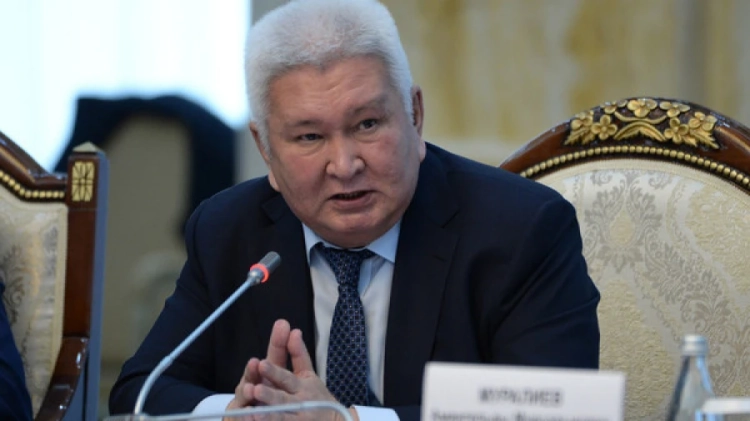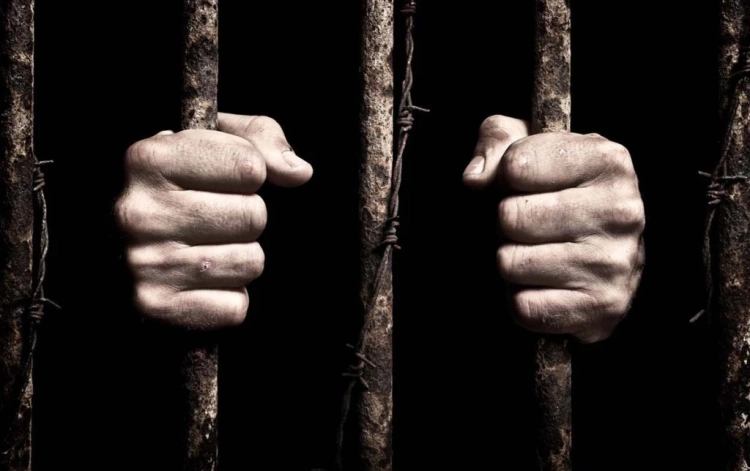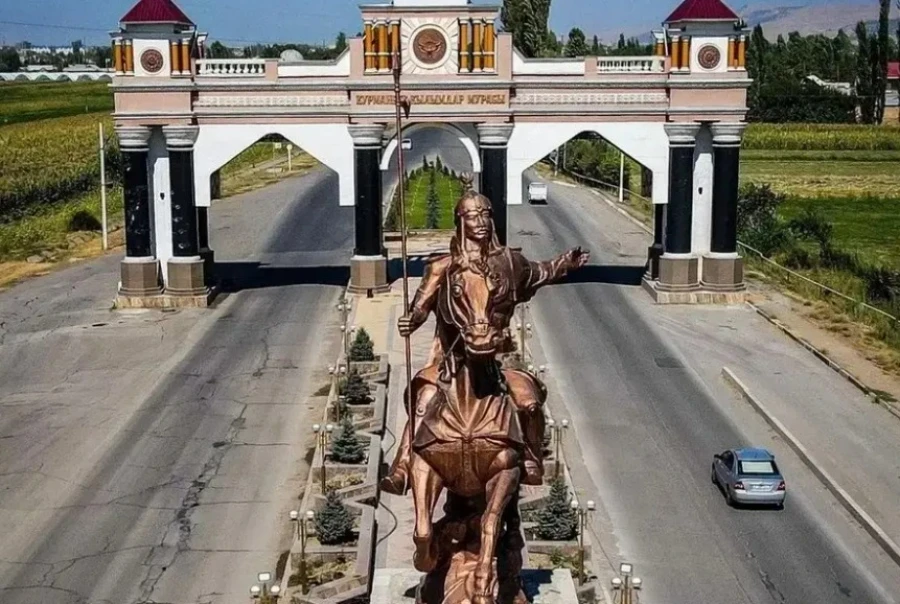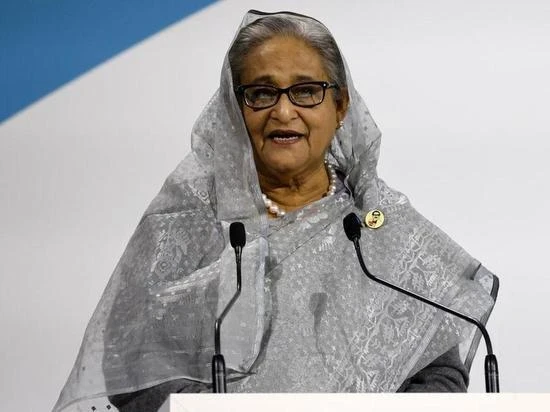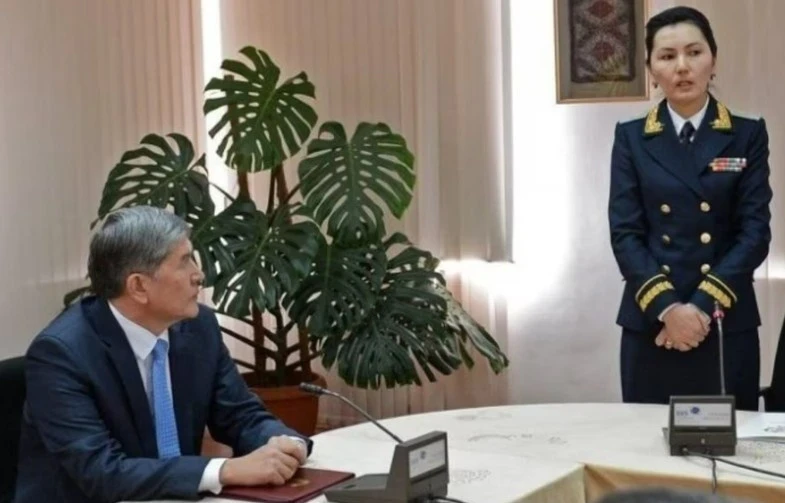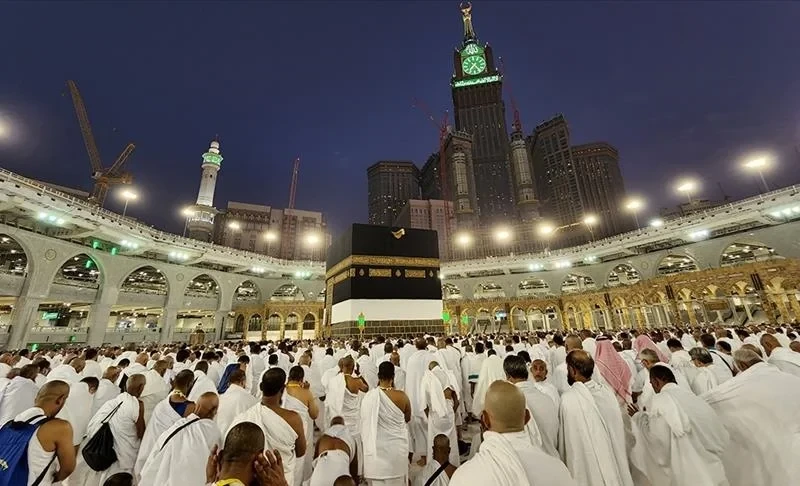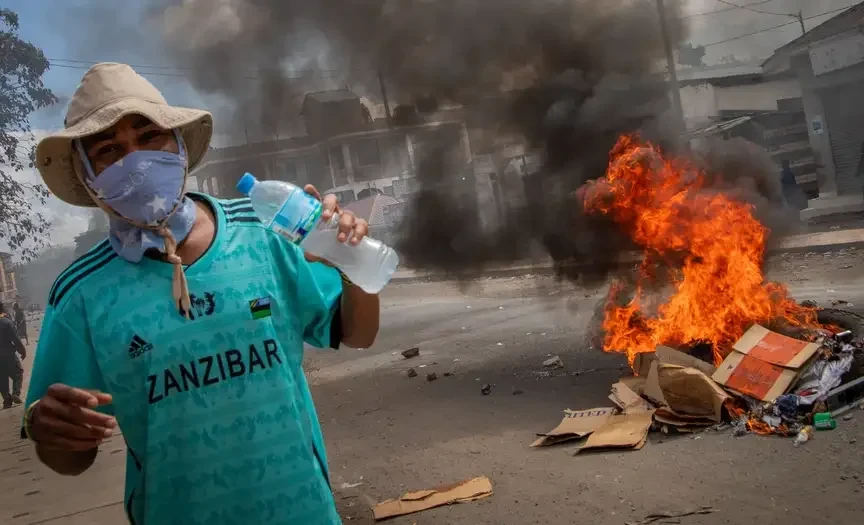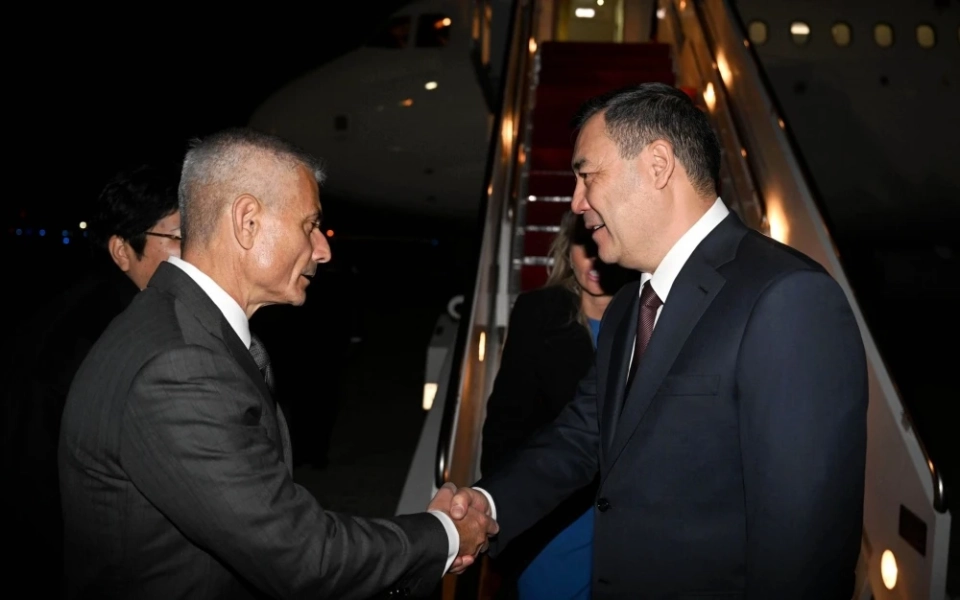
This is more than just a legal question
In Kyrgyzstan, the possibility of reinstating the death penalty is actively discussed. In the fall of 2025, the presidential administration of Sadyr Japarov presented the public with an initiative to repeal Law No. 52 of March 16, 2010, which concerned joining the international protocol on the abolition of the death penalty. Japarov himself stated his intention to put the final decision on this issue to a nationwide vote.
Pressure on journalists in the context of death penalty cases
The return of the death penalty creates a specific legal and psychological environment in which working on "special" cases becomes not only difficult but also dangerous. Journalists are forced to constantly balance between professional duties and fear of the repressive system.
The death penalty is proposed for "particularly serious" crimes, such as murders and sexual offenses against children and women. These cases invariably provoke strong public resonance, so authorities strive to tightly control the information space. Journalistic investigations, critical questions about the quality of the investigation, and evidence are perceived as interference or an attempt to "justify the criminal." This leads to closed hearings, limited access to materials, and references to "investigative secrecy" and "national security."
In such conditions, internal censorship is formed. Editorial offices begin to "trim" formulations, avoid evaluative words and sharp conclusions. Fear becomes an integral part of the work: journalists fear not specific officials, but the system, which can accuse them of defamation, disclosure of investigative secrecy, or "justifying crimes" at any moment. Laws that are supposed to protect reputation and investigative secrecy are effectively used as tools of intimidation. As a result, materials about judicial errors and abuses by law enforcement agencies appear less frequently, while public discussions are reduced to voicing official versions.
Cases related to the threat of the death penalty often become indicators of power, demonstrating control over "truth." Journalists distance themselves from such processes, receiving a clear signal: "do not interfere." However, it is precisely in these situations that independent media play a critically important role, as the price of a mistake can be a human life.
A vivid example is the case of the murder of Medet Sadykulov, the former head of the presidential administration. In 2009, he, Sergey Sleptchenko, and driver Kubat Suimanov were found in a burned car near Bishkek; authorities declared it an accident and quickly found the "guilty" Omurbek Osmonov, who was convicted of violating traffic rules that led to the deaths of three people. Any doubts about the official version were regarded as a political challenge. Only after the April Revolution of 2010 was the case reopened, and it turned out that Sadykulov had been kidnapped, tortured, and killed, and the accident was staged, with the names of the Bakievs and their security forces involved in the case. If the death penalty had been in effect at that time and actively applied, Osmonov could have been executed before the case was reviewed, and journalists questioning the "accident" version would risk not only their careers but also their freedom.
In a system where the state is ready to take lives and simultaneously suppress public doubts, judicial errors become the norm. In conditions of intimidation of journalists, the death penalty inevitably turns into a tool of irreversible injustice.
The death penalty as a political signal
The decision to reinstate the death penalty is never just a legal step — it is always a political demonstration. By reaffirming its right to take life, the state is effectively signaling its readiness to govern through fear rather than trust and law.
The death penalty is not just a punishment, but a symbol of absolute power, where a person's life depends on the state's decision. In places where the rule of law once protected citizens, it now gives way to the principle of subordination. The state becomes the arbiter not only of actions but also of existence, leading to the disappearance of a sense of personal security and accountability of power to the people.
The process of reinstating the death penalty always occurs against a backdrop of political instability. When the regime feels threatened and society begins to express discontent, the authorities seek ways to demonstrate their strength and control. The readiness to take life serves as a reminder of who defines what justice is. That is why the death penalty is often accompanied by other measures of suppression: censorship, increased pressure on the opposition, and tightening laws on media and "state treason."
History knows many examples. In some countries, the death penalty was reinstated under the pretext of fighting terrorism, in others — against corruption, but ultimately it became part of a system of intimidation. After the return of the highest penalty, the list of crimes for which one can be executed often expands. Today it may be murder, tomorrow — treason, and the day after tomorrow — "undermining the authority of the government" or "spreading misinformation." Thus, political articles gradually turn into tools for dealing with dissent.
For journalists, this poses a direct threat. If the state demonstrates a willingness to take life, it is all the more ready to suppress freedom of speech. The return of the death penalty strengthens repressive structures and instills in society the idea that dissent is dangerous, doubt is punishable, and criticism can have serious consequences. In conditions where the power allows itself to kill, it easily takes away the right to speak.
When the power returns the right to take life, it also restores the right not to be challenged. Any attempt by a journalist to question the official version becomes a challenge not only to the system but also to the very logic of power. Thus, the return of the death penalty is not a simple legal reform, but a political declaration confirming that fear is once again more important than freedom.
When journalism can save a life
The case of Kamila Dushebaeva
In March 2014, 19-year-old student Kamila disappeared from her home in Bishkek. A few days later, her body was found by the roadside in the Baytik area: the girl had been strangled with her own scarf. The investigation dragged on for years, versions changed, names of influential people appeared in the public domain, and key moments, such as missing recordings from surveillance cameras, raised more and more questions. This is a typical case where it would have been more convenient to declare the crime "domestic" and forget about it. However, journalists did not allow this to happen.
The editorial offices of "Azattyk," Kloop, 24.kg, and others repeatedly returned to the case, uncovering contradictions, tracking the search for suspects, and publishing the family's positions. Thanks to this, Kamila's murder remained in the spotlight and did not end up in the archives. In the fall of 2025, during the investigation of another crime, a suspect in the murder of 17-year-old Aysulu Mukasheva, Kumarbek Abdyrov, confessed that many years ago he had killed both Kamila and several other girls. The investigation is now reconstructing the chronology of his crimes.
This turn is important not only for establishing the truth but also shows that in a high-profile case, a "convenient" culprit could have been appointed and, had the death penalty been in place, the issue could have been quickly closed. The confession of a serial killer might not have been necessary — the executed cannot be returned, and journalists would have been forbidden to doubt the version.
The case of Alisher Saipov
Alisher Saipov, a 26-year-old journalist from Osh, covered repression, corruption, and human rights violations in Uzbekistan, worked with international media, and was a prominent voice in the region. In the fall of 2007, he was shot outside his office. Authorities claimed that the murder was not related to his work, later the court sentenced Abdufarit Rasulov to 20 years in prison. Formally, the murderer was found, but the logic of the investigation and trial left many questions: Rasulov denied his guilt, reports of torture emerged, and the figure of a possible mastermind was never revealed.
Saipov's colleagues, his family, and human rights activists insisted on a real investigation for many years; international organizations and media mentioned his murder as a symbol of impunity for the killings of journalists. The criminal case was reopened several times, but a final resolution was never reached. Journalism did not save Saipov's life, but it did not allow his murder to become a "closed case" that could be used as a convenient official version.
American cases related to the death penalty complement this picture. Anthony Porter spent seventeen years on death row and was saved thanks to an investigation by student journalists; in Illinois, after that, a moratorium on the death penalty was introduced, and then it was abolished. Randall Dale Adams was freed after a documentary exposed flaws in the investigation. Walter McMillian was released thanks to a combination of legal work and extensive media coverage. The story of Cameron Todd Willingham, who was executed and then posthumously exonerated by a journalistic investigation, serves as a reminder: when a person has already been executed, the revealed truth can no longer change anything.
In all these cases, journalism performs the same function — it does not allow the state to establish a convenient version forever. In situations where the death penalty is in effect, this is especially important: every silenced mistake can lead not only to a just verdict but also to irreversible murder, after which it is too late to ask questions.
Consequences that cannot be ignored
The reinstatement of the death penalty destroys not only the value of human life but also the architecture of public dialogue. Where the state demonstrates a willingness to take life, the media lose their freedom. Journalists become hostages of political fear, and critical journalism becomes a rarity.
The death penalty kills not only people but also the very idea of freedom. It suppresses doubts, turns journalists into silent witnesses of injustice, and replaces public discussions with fear of the punishing hand of the state.
Freedom of speech cannot exist in conditions of devaluation of human life. Therefore, the fight against the death penalty is not only a struggle for humanitarianism but also for the right of journalists to speak the truth, even if it is unwelcome to the authorities.
Photo www

